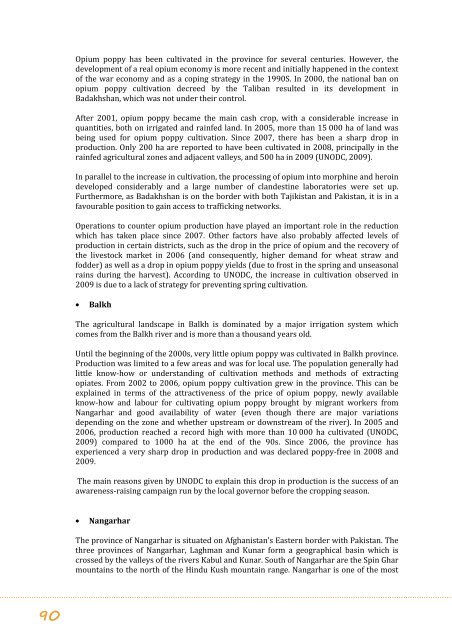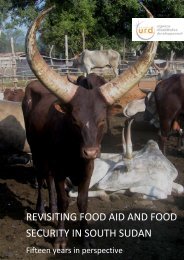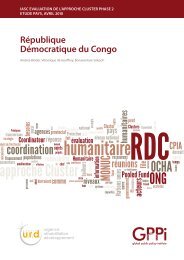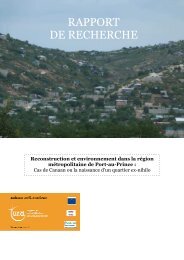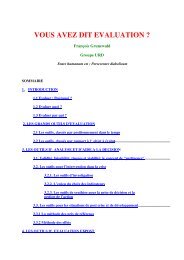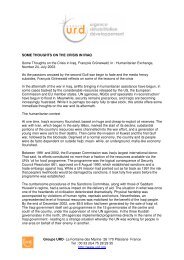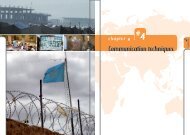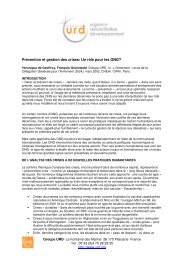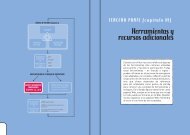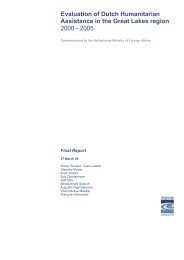strategies to counter opiate in Afghanistan - Groupe URD
strategies to counter opiate in Afghanistan - Groupe URD
strategies to counter opiate in Afghanistan - Groupe URD
Create successful ePaper yourself
Turn your PDF publications into a flip-book with our unique Google optimized e-Paper software.
Opium poppy has been cultivated <strong>in</strong> the prov<strong>in</strong>ce for several centuries. However, the<br />
development of a real opium economy is more recent and <strong>in</strong>itially happened <strong>in</strong> the context<br />
of the war economy and as a cop<strong>in</strong>g strategy <strong>in</strong> the 1990S. In 2000, the national ban on<br />
opium poppy cultivation decreed by the Taliban resulted <strong>in</strong> its development <strong>in</strong><br />
Badakhshan, which was not under their control.<br />
After 2001, opium poppy became the ma<strong>in</strong> cash crop, with a considerable <strong>in</strong>crease <strong>in</strong><br />
quantities, both on irrigated and ra<strong>in</strong>fed land. In 2005, more than 15 000 ha of land was<br />
be<strong>in</strong>g used for opium poppy cultivation. S<strong>in</strong>ce 2007, there has been a sharp drop <strong>in</strong><br />
production. Only 200 ha are reported <strong>to</strong> have been cultivated <strong>in</strong> 2008, pr<strong>in</strong>cipally <strong>in</strong> the<br />
ra<strong>in</strong>fed agricultural zones and adjacent valleys, and 500 ha <strong>in</strong> 2009 (UNODC, 2009).<br />
In parallel <strong>to</strong> the <strong>in</strong>crease <strong>in</strong> cultivation, the process<strong>in</strong>g of opium <strong>in</strong><strong>to</strong> morph<strong>in</strong>e and hero<strong>in</strong><br />
developed considerably and a large number of clandest<strong>in</strong>e labora<strong>to</strong>ries were set up.<br />
Furthermore, as Badakhshan is on the border with both Tajikistan and Pakistan, it is <strong>in</strong> a<br />
favourable position <strong>to</strong> ga<strong>in</strong> access <strong>to</strong> traffick<strong>in</strong>g networks.<br />
Operations <strong>to</strong> <strong>counter</strong> opium production have played an important role <strong>in</strong> the reduction<br />
which has taken place s<strong>in</strong>ce 2007. Other fac<strong>to</strong>rs have also probably affected levels of<br />
production <strong>in</strong> certa<strong>in</strong> districts, such as the drop <strong>in</strong> the price of opium and the recovery of<br />
the lives<strong>to</strong>ck market <strong>in</strong> 2006 (and consequently, higher demand for wheat straw and<br />
fodder) as well as a drop <strong>in</strong> opium poppy yields (due <strong>to</strong> frost <strong>in</strong> the spr<strong>in</strong>g and unseasonal<br />
ra<strong>in</strong>s dur<strong>in</strong>g the harvest). Accord<strong>in</strong>g <strong>to</strong> UNODC, the <strong>in</strong>crease <strong>in</strong> cultivation observed <strong>in</strong><br />
2009 is due <strong>to</strong> a lack of strategy for prevent<strong>in</strong>g spr<strong>in</strong>g cultivation.<br />
• Balkh<br />
The agricultural landscape <strong>in</strong> Balkh is dom<strong>in</strong>ated by a major irrigation system which<br />
comes from the Balkh river and is more than a thousand years old.<br />
Until the beg<strong>in</strong>n<strong>in</strong>g of the 2000s, very little opium poppy was cultivated <strong>in</strong> Balkh prov<strong>in</strong>ce.<br />
Production was limited <strong>to</strong> a few areas and was for local use. The population generally had<br />
little know-how or understand<strong>in</strong>g of cultivation methods and methods of extract<strong>in</strong>g<br />
<strong>opiate</strong>s. From 2002 <strong>to</strong> 2006, opium poppy cultivation grew <strong>in</strong> the prov<strong>in</strong>ce. This can be<br />
expla<strong>in</strong>ed <strong>in</strong> terms of the attractiveness of the price of opium poppy, newly available<br />
know-how and labour for cultivat<strong>in</strong>g opium poppy brought by migrant workers from<br />
Nangarhar and good availability of water (even though there are major variations<br />
depend<strong>in</strong>g on the zone and whether upstream or downstream of the river). In 2005 and<br />
2006, production reached a record high with more than 10 000 ha cultivated (UNODC,<br />
2009) compared <strong>to</strong> 1000 ha at the end of the 90s. S<strong>in</strong>ce 2006, the prov<strong>in</strong>ce has<br />
experienced a very sharp drop <strong>in</strong> production and was declared poppy-free <strong>in</strong> 2008 and<br />
2009.<br />
The ma<strong>in</strong> reasons given by UNODC <strong>to</strong> expla<strong>in</strong> this drop <strong>in</strong> production is the success of an<br />
awareness-rais<strong>in</strong>g campaign run by the local governor before the cropp<strong>in</strong>g season.<br />
• Nangarhar<br />
The prov<strong>in</strong>ce of Nangarhar is situated on <strong>Afghanistan</strong>’s Eastern border with Pakistan. The<br />
three prov<strong>in</strong>ces of Nangarhar, Laghman and Kunar form a geographical bas<strong>in</strong> which is<br />
crossed by the valleys of the rivers Kabul and Kunar. South of Nangarhar are the Sp<strong>in</strong> Ghar<br />
mounta<strong>in</strong>s <strong>to</strong> the north of the H<strong>in</strong>du Kush mounta<strong>in</strong> range. Nangarhar is one of the most<br />
90


